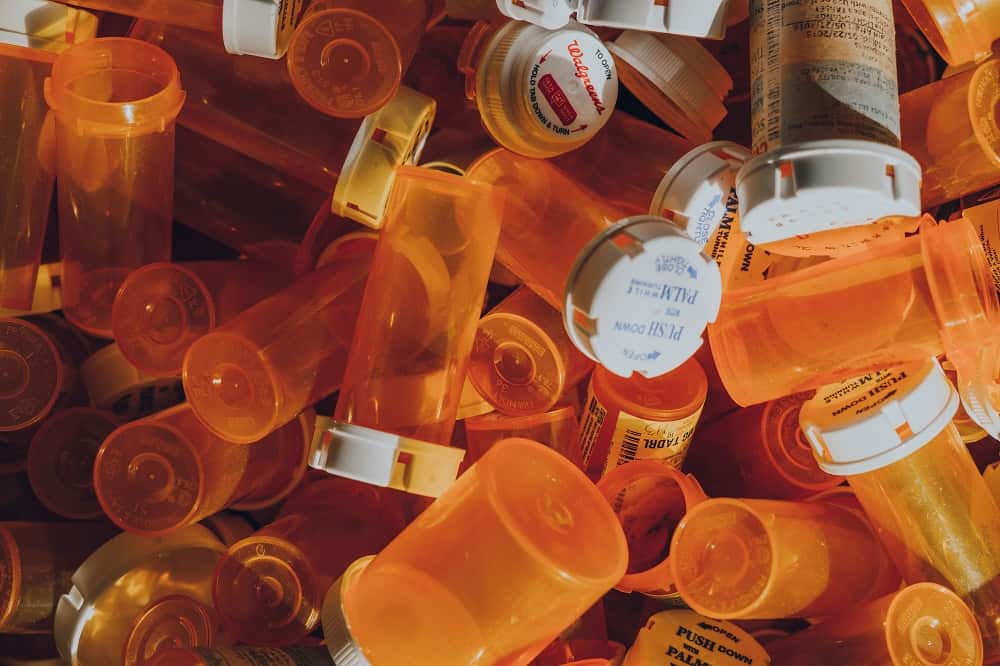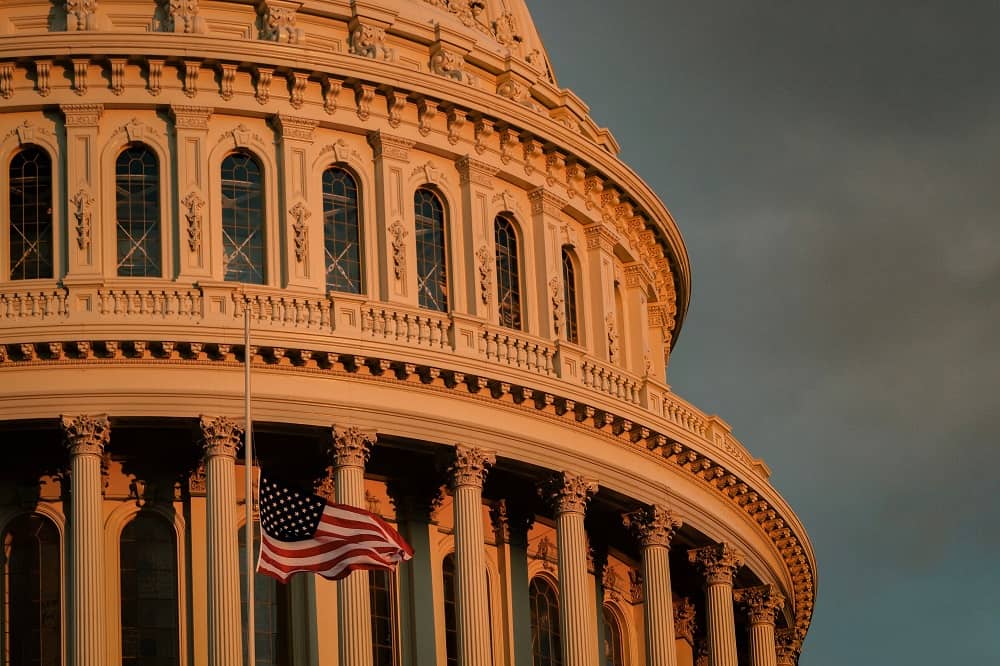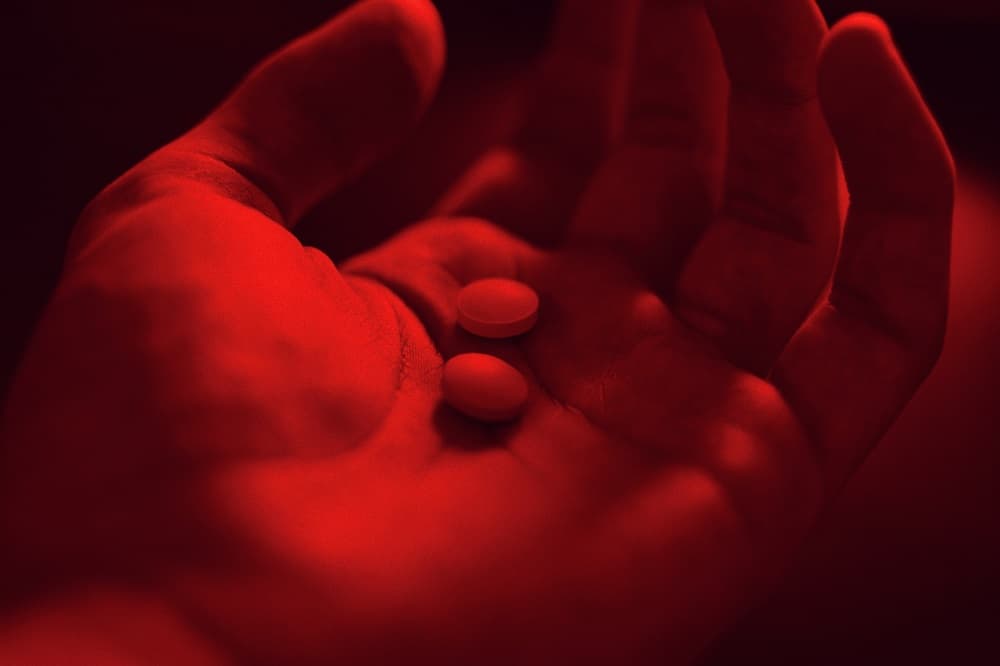“I think this plan is a really clever way to get a handle on the opioid settlement negotiations.” ~ Howard Erichson, Professor, Fordham University School of Law, Expert on Complex Litigation In mid-June, lawyers representing various cities and counties across the country proposed including all 24,500 American communities in a possible comprehensive national settlement of the more than 1800 opioid lawsuits against drug manufacturers and distributors. This would mean that if an agreement could be reached, every municipality in America would share in the funds. For communities that have been affected – or even devastated – by the ongoing and still-worsening opioid epidemic, this would provide some sorely-needed funds to support and expand prevention and treatment efforts. Unfortunately, less than 10% of people who struggle with problematic substance abuse ever get the specialized help they need. The kind of money that could result from a national opioid settlement could change that. And if the right assurances can be made, such a settlement would also benefit the drug companies, because it would save them both the expense of prolonged litigation and the negative press that would surely result from a public trial. But although both sides have much to gain by settling now, there is still a lot to be worked out, and challenges still remain. There is as of yet only a framework in place that points to the possibility of a national opioid settlement. Let’s take a closer look at how bad the problem has been, who the players are, what’s at stake, where we are now, the pros and cons of a comprehensive deal, and what it’s going to take to get there.
“Get your loved one the help they need. Our substance use disorder program accepts many health insurance plans, this is our residential program.”
The US Opioid Epidemic: A Quick Overview
“In terms of the overall number of overdose deaths, the epidemic is unprecedented and has wide-ranging negative effects, not only on individuals but on their families and communities.” ~ Dr. Nora Volkow, Director of the National Institute on Drug Abuse Currently, drug overdoses are the leading cause of death for Americans younger than 50. In fact, drug poisonings claim more lives than gun homicides and car crashes combined. Of troubling concern, the numbers are continuing to get much worse. According to the National Center for Health Statistics, the United States has endured 19 consecutive years of tragic new “records”:
- 1999: 16849
- 2000: 17415 (+3.3%)
- 2001: 19394 (+11.4%)
- 2002: 23514 (+21.2%)
- 2003: 25785 (+9.7%)
- 2004: 27424 (+6.6%)
- 2005: 29813 (+8.7%)
- 2006: 34425 (+15.5%)
- 2007: 36010 (+4.6%)
- 2008: 36450 (+1.2%)
- 2009: 37004 (+1.5%)
- 2010: 38329 (+3.6%)
- 2011: 41340 (+7.9%)
- 2012: 41502 (+.4%)
- 2013: 43982 (+6.0%)
- 2014: 47055 (+7.0%)
- 2015: 52404 (+11.4%)
- 2016: 63632 (+21.4%)
- 2017: 71,000 (estimated) (+11.6%)
In less than a generation, fatal overdoses have more than quadrupled, largely driven by opioids. For example, in 2015, over 58% of overdose deaths involved prescription painkillers, heroin, or, increasing illicit synthetic opioids like fentanyl. Since 1999, drug overdoses have killed more Americans than every armed conflict combined, dating back to World War I. The United States has 5% of the world’s population but consumes 80% of the global opioid supply, including 95% of its hydrocodone, the primary ingredient in Vicodin. Right now, there are around two million people in America who struggle with prescription opioid addiction, and an average of 130 Americans die every day because of opioid overdoses. The Centers for Disease Control and Prevention estimates that prescription painkiller abuse places an economic burden on the US that reaches $78.5 billion annually. 
Who are the Plaintiffs?
“This is an attempt to bind together all of the cities and counties in the U.S. to negotiate as one as if the defendants are interested in a global deal. Imagine a legion of soldiers prepping in the battle against an adversary. You don’t want soldiers wandering around in different directions. You want the soldiers to be unified. There’s strength in numbers.“ ~ Attorney Paul J. Hanly Jr., Co-lead for the Federal litigation The 1850 plaintiffs already named in the Federal lawsuit are communities from every part of the United States – counties and individual cities. This shows how every part of America has been impacted by the opiate crisis. According to the latest “Vital Signs” report put out by the CDC, there was no part of the United States that failed to experience an increase in opioid-related fatal overdoses between 2016 in 2017. Emergency room visits involving overdoses caused by opioids jumped 30% in every part of the country. July 2016-September 2017:
- The Midwest: 70% increase in opioid overdoses.
- Large metros: +54%
- Large “fringe” metros: +21%
- Medium-sized metros: +43%
- Small metros: +37%
- Micropolitan communities: +24%
- Non-core cities: +21%
Even more telling, the National Center for Health Statistic has released a report highlighting just how badly some states have been hit by the opioid crisis. Here are the fatal opioid overdose rates for each state and the District of Columbia for 2017, ranked by overdose death rate per 100,000 residents:
- West Virginia — 49.6
- Ohio — 39.2
- District of Columbia — 34.7
- New Hampshire — 34
- Maryland — 32.2
- Maine — 29.9
- Massachusetts — 28.2
- Kentucky — 27.9
- Delaware — 27.8
- Connecticut — 27.7
- Rhode Island — 26.9
- New Jersey — 22
- Michigan — 21.2
- Pennsylvania — 21.2
- Vermont — 20
- North Carolina — 19.8
- Tennessee — 19.3
- Indiana — 18.8
- Illinois — 17.2
- Wisconsin — 16.9
- New Mexico — 16.7
- Missouri — 16.5
- Florida — 16.3
- New York — 16.1
- South Carolina — 15.5
- Utah — 15.5
- Virginia — 14.8
- Alaska — 13.9
- Arizona — 13.5
- Nevada — 13.3
- Oklahoma — 10.2
- Colorado — 10
- Georgia — 9.7
- Washington — 9.6
- Louisiana — 9.3
- Alabama — 9
- Wyoming — 8.7
- Oregon — 8.1
- Minnesota — 7.8
- Iowa — 6.9
- Arkansas — 6.5
- Mississippi — 6.4
- Idaho — 6.2
- California — 5.3
- Kansas — 5.1
- Texas — 5.1
- North Dakota — 4.8
- South Dakota — 4.0
- Montana — 3.6
- Hawaii — 3.4
- Nebraska — 3.1
“We treat both addiction and co-occurring disorders and accept many health insurance plans. Take a look at our inpatient program.”
Who are the Defendants?
“Purdue Pharma…sponsored 20,000 educational programs across the country with messages for the medical community that we were allowing patients to suffer needlessly because of an overblown fear of addiction…And as the medical community responded to this brilliant marketing campaign, and as the prescribing began to take off, it led to parallel increases in addiction and overdose deaths that led to a public health crisis. Since 1997, we’ve had a 900% increase in opioid addiction in the United States from exposure to opioid pain medication.” ~ Dr. Andrew Kolodny, MD, speaking to Kentucky Educational Television in 2016 There are two dozen companies being sued for their part in the opioid crisis, including some of the largest drug manufacturers and distributors in the country:
- Actavis
- Allergan
- Cephalon
- CVS
- Endo
- Janssen
- Johnson & Johnson
- Purdue
- Rite Aid
- Teva
- TopRx
- Walgreens
- Wal-Mart
In the original 2017 filing, the description read, “Plaintiffs allege that the manufacturers of prescription opioids grossly misrepresented the risks of long-term use of those drugs for persons with chronic pain, and distributors failed to properly monitor suspicious orders of those prescription drugs – all of which contributed to the current opioid epidemic.”
What are the Charges?
“…(the) lawsuit alleges that the drug companies engaged in fraudulent marketing regarding the risks and benefits of prescription opioids… We believe that the evidence will show that these pharmaceutical companies purposely misled doctors about the dangers connected with pain meds that they produced and that they did so for the purpose of increasing sales. And boy, did they increase sales.” ~ Mike DeWine, Ohio Attorney General Among the stated grievances are allegations that the manufacturers knowingly:
- Minimized the abuse and addiction potential of their opioid products
*A 2015 review found that 30% of prescribed opioids are misused, and 10% of pain patients are addicted.
- Overstated the medications’ effectiveness.
*Opioids are actually no better than over-the-counter remedies at managing chronic pain.
- Exaggerated the duration of pain relief.
*Physicians and patients were told that OxyContin relieved pain for 12 hours, instead of the actual 8 hours.
- Ignored reports of misuse.
*Purdue execs knew their products were being abused as far back as 1999.
- Unethically provided incentives to doctors to push opioid painkillers – trip, bonuses, “consultant” fees, etc.
*As a result, the top 10% of opioid prescribers write 57% of the prescriptions
- Punished prescribers who did not meet quotas.
Drug company execs would withhold cushy paid speaking engagements and trips until more opioids were prescribed.
- Required providers to treat pain as a “vital sign”
*Doctors were urged to eliminate pain with opioids, rather than safely manage it with other methods.
Pharmacies like Walgreens, CVS, and Walmart are included in the lawsuit because it is alleged that they also ignored reporting guidelines for the sake of higher profits.
What is at Stake?
“(Purdue Pharma is) drowning in lawsuits. This isn’t the first settlement the company has reached during this big opioid crisis, but it comes in a crucial year, at a time when people are watching to see if this company will start cutting deals with states and local governments two limit its legal exposure. So this is a big settlement. It’ll be looked at as a potential template for future deals all over the country.” ~ Brian Mann, “All Things Considered” National Public Radio In a word, money. According to court documents filed by the plaintiffs in April, addressing the opioid crisis could cost a staggering $480 billion. That’s the kind of money that could make a real difference and save hundreds of thousands of lives:
- Public awareness campaigns
- Prevention efforts
- Education
- Expansion of treatment services
- Development of new anti-addiction medications
- Increased availability of emergency overdose reversal drugs
- Family programs
- Housing, educational, vocational, and employment assistance
But this is also the kind of money that can change the entire opioid industry. For example, Purdue Pharma has already stopped marketing OxyContin, joining Janssen Pharmaceuticals and Allergan, each of whom hasn’t actively promoted their opioid products in years. Purdue has also laid off more than half of its sales force and is said to be looking into bankruptcy protection.
Looking at What Happened in Oklahoma
“It is a new day in Oklahoma and for the nation in our battle against addiction and the opioid epidemic…We are out of time with regard to the responsibility we have to deal with this crisis. But the money from this settlement will provide significant and substantial funding to the Center for Wellness and Recovery here, allowing us to focus our attention on what should be our highest priority: Americans struggling with addiction.” ~ Oklahoma Attorney General Mike Hunter In March of this year, Purdue Pharma, the manufacturer of Oxycontin, agreed to a massive financial settlement, putting an end to the opioid lawsuit brought by the State of Oklahoma. It was alleged that Purdue and other drug companies had committed fraud by waging a deceptive marketing campaign that understated the abuse potential of their products, thereby creating addicts and causing overdose deaths by the thousands. Purdue will pay $270 million, a calculated corporate decision in order to avoid a very public trial that was certain to generate an enormous amount of negative press. Not everyone is in favor of this. Senator Richard Blumenthal, who formerly served as Oklahoma’s Attorney General, said, “…there is also virtue in trials that publicly inform the nation and allow evidence to be made public.” The $270 million is by the largest payout to-date in Purdue’s ongoing legal battle. Right now, Purdue Pharma and its owners are named in more than 1600 lawsuits resulting from their corporate and personal roles in both creating and expanding the opioid addiction epidemic that continues to drive the American drug crisis. But there are important aspects to this particular case Oklahoma that could have far-reaching implications for other lawsuits. And this is why establishing the proper framework for a potential national opioid settlement is so important. First, Purdue was eager to make this deal, reaching an agreement a full two months before the case was set to go to trial. Second, there were several Oklahoma cities and towns that did not participate in the state’s lawsuit, instead opting to pursue their own cases: Oklahoma City, Lawton, Broken Arrow, Midwest City, and Enid. Third, this settlement only involves Purdue Pharma. Oklahoma’s lawsuit will continue against other drug manufacturers. “Oklahoma’s settlement moves the needle toward more settlements. It’s a reference point that other states will look to in their own negotiations…,” said Robert Bird, who teaches Business Law at the University of Connecticut. These fines and lawsuits are hitting drug companies where it really hurts –right in the profits. And if judgments from the past lawsuits against Big Tobacco are an accurate benchmark, then opioid settlements will be in the HUNDREDS OF BILLIONS of dollars. Look at what has already happened:
- Purdue Pharma (2007): $601 million
- Purdue Pharma (2019): $270 million
- McKesson (2019): $37 million
- Insys Therapeutics (2019): $150 – $225 million
- Teva Pharmaceuticals (2019): $85 million, reaching a settlement with Oklahoma just two days before the lawsuit was set to go to trial.
Criminal Convictions Set a Powerful Precedent
“Today’s convictions mark the first successful prosecution of top pharmaceutical executives for crimes related to the illicit marketing and prescribing of opioids. Just as we would street-level drug dealers, we will hold pharmaceutical companies responsible for fueling the opioid epidemic by recklessly and illegally distributing these drugs, especially while conspiring to commit racketeering along the way.” ~ Andrew Lelling, a top federal prosecutor in Massachusetts In My 2019, a Boston jury found Insys Therapeutics executives guilty of conspiracy and racketeering charges involving the sale of Subsys, their flagship product. Subsys is a powerful opioid painkiller primarily given to cancer patients. A month’s supply of Subsys costs up to $30,000. In 2016 alone, Subsys generated $240 million in sales. In late 2017, John Kapoor, Insys’ billionaire founder, and former CEO was arrested and charged with:
- Conspiracy to defraud insurance providers
- Conspiracy to violate the anti-kickback law
- RICO conspiracy
- Conspiracy to commit wire fraud
After a ten-week trial this year, the jury convicted Kapoor and four other top executives:
- Richard Simon, former National Director of Sales
- Michael Gurry, former Vice President of Managed Markets
- Sunrise Lee, former Regional Sales Director
- Joseph Rowan, also a former Regional Sales Director
Ultimately, they were convicted of conspiring to increase profits by bribing prescribers and by lying to insurers about patients’ need for Subsys. One of Insys’ most-common tactics was to bribe doctors and other prescribers by paying them huge fees for cushy “speaking engagements”. In 2016, Insys made 18000 payments to doctors around the country, eventually spending more than two million dollars. These convictions carry up to 20 years in prison, and the message is loud and clear: those who are most for creating the opioid epidemic are being held accountable at last. Insys Therapeutics filed for bankruptcy in mid-June.
“We accept many health insurance plans. Get your life back in order, take a look at our residential program.”
How Would an Opioid Settlement Benefit Affected Communities?
“Up to this point, the vast majority of the costs of the opioid catastrophe have been shouldered by the taxpayers. It is our hope, and it is the intention of (the) lawsuit to hold the industry accountable and to make the opioid industry shoulder its share of the burden.” ~ Mark Chalos, one of the attorneys representing numerous municipalities in the nationwide opioid case Unfortunately, this does NOT mean that there is soon going to be a huge pool of money available for every single person who has ever struggled with opioid addiction. These lawsuits were filed by governments to protect their citizens and recoup past financial losses they may have spent on such addiction-related expenses as:
- Law Enforcement
- Emergency Services
- Medical Treatment
- Overdose Reversal Drugs
- Incarceration
- Court Costs
- Government-Funded Drug Rehab
Settlement money can also be used to expand existing services and create new ones, thereby both helping people who are already addicted AND preventing the next generation of addicts. There is also a very practical concern that underscores why it might be in the plaintiffs’ best interests to settle now, rather than prolonging the legal battle. Simply put, when faced with judgment after judgment and individual settlement after individual settlement, some of these companies are going to run out of money. Bankruptcy protection has a very real possibility. In other words, it might be better to share in an agreed-upon settlement now, rather than fighting for years to end up with nothing.
Why Do the Drug Manufacturers and Distributors Want to Settle NOW?
“To resolve the opioid problem, you’re going to need billions. Treatment alone could be fifty billion dollars or more. And you need prevention and education programs on top of that.” ~ Attorney Mark Moore, who worked in a similar class-action lawsuit against Big Tobacco A lot of disturbing revelations have already come out about the widespread corporate malfeasance practiced by Big Pharma companies, painting an unflattering picture of the entire industry. This has seriously shaken the confidence of both the public and investors. For example:
- In late 2015, Insys stock was approaching $50 per share. As of late-June 2019, a share can be purchased for 26 cents.
- In May 2019, JPMorgan, the largest bank in America, cut financial ties with Purdue.
- Teva, Johnson & Johnson, Endo, and Allergan have all also seen double-digit decreases in stock prices.
A lengthy trial will be expensive, and the companies run the risk of even more damning evidence being made public. And no matter how huge the settlement, it would still be billions of dollars less than what could be awarded if the lawsuit were to be successful. Drug manufacturers want to settle, but this entire situation behind them, and find a way to move forward. Insys, for example, is moving away from its established corporate identity as an opioid manufacturer and re-brand itself as a company that produces cannabinoids and drug delivery systems.
What are the Challenges Involved in Reaching a National Opioid Settlement?
“But, the thing with tobacco is that the health consequences occurred over time, and it wasn’t an immediate response. People ask me to compare that to the opioid problem now, and the problem now is that a 17-year-old gets a hold of an Oxy-80 pill out of grandmamma’s cabinet and takes a pill, they can die that day…The addiction is immediate, and the damage is immediate, and we don’t have time to reverse it.” ~ Joe Rice, Co-Lead Attorney for the National Prescription Opioid Litigation But even though the settlement would greatly benefit both sides, there are still a lot of financial and legal wrinkles that need to be ironed out. For example, in addition to agreeing on a dollar amount, the parties also have to decide on a timetable for payment, how the funds are to be distributed among the plaintiffs, and how that money is to be used. And if individual cities, counties, and municipalities do not believe that they are receiving their fair share or as much as they think they are entitled to, some may opt out of the settlement and continue to pursue their own lawsuits. This is exactly what is happening in Oklahoma might have. That is exactly what Big Pharma defendants don’t want. They are agreeable to expanding the number of plaintiffs from less than 2000 to more than 24,000 IF it protects them from future lawsuits from local governments. There are also limitations to the proposal. It does not include other types of plaintiffs – Native American tribes, unions, hospitals, or children who were born opioid-addicted. A national opioid settlement also would not affect lawsuits from the states themselves, which are not included both in this Federal case. Reaching an agreement that is mutually acceptable to all parties involved will be tricky. This is why Samuel Issacharoff, who teaches complex litigation at New York University’s School of Law, says, “This is the most elaborate and direct form of class member participation that has ever been tried.”
The Right Judge to Get Things Done
“The stakes, in this case, are incredibly high. Any thinking person should feel terrible about the situation we’re in…The judicial branch typically doesn’t fix social problems, which is why I’m somewhat uncomfortable doing this. But it seems the most human thing to do.” ~ Judge Dan Aaron Polster However, there is a widespread opinion that if anyone can help facilitate the settlement, this particular presiding judge can. At the very first hearing in January 2018, Judge Polster ordered the lawyers for both sides to prepare a settlement as fast as possible, saying that he would not sit back and preside over years and years of “unraveling complicated conspiracy theories”. Even more to the point, Judge Polster insisted on meaningful solutions to the national crisis, saying that he would not approve any settlement that merely involves “moving money around”. He gives a human reason for wanting an appropriate agreement instead of prolonged arguments. During one session, he said, pointedly, “I did a little math. About 150 Americans are going to die today, just today, while we’re meeting.”
What the Possibility of a National Opioid Settlement Means to You
Among all of the news coming to light from this mountain of lawsuits is one inescapable fact – opioid abuse, dependence, and addiction can happen to ANYONE, even a responsible patient with a legitimate prescription and who takes their medication exactly as directed by their doctor. The other takeaway is that the opioid epidemic is a problem that was years in the making, so it is going to take time to find the right solutions and reverse course. The crisis did not develop overnight, and it will not be solved overnight, regardless of if and when a national opioid settlement agreement is ever reached. In the meantime, the best way to deal with the US drug crisis on an individual basis is to seek specialized professional opioid drug misuse treatment when you or someone you care about needs help. If you are struggling with a dependence on or addiction to prescription painkillers, heroin, Black-market opioids, or any other day, click here to speak to someone immediately.



